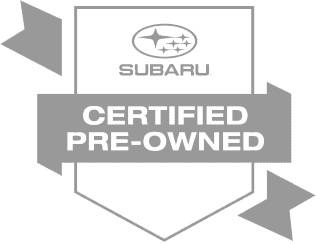
SUBARU BOXER ENGINES
The evolution of Subaru design is represented by the FB SUBARU BOXER engine. A 2.5-liter version powers the Forester and the new 2.0-liter unit is in the 2012 Impreza. They provide improved fuel economy with reduced emissions.
Part one referred to the lightweight engine components that contribute to improving fuel economy. These are complemented by component and system designs within the engine that help reduce friction - the greatest obstacle to good fuel economy.
Here are some items that help improve fuel economy in Subaru engines.
Cylinders, Pistons, and Crankshafts

Subaru uses low-viscosity oil in its engines, which offers less resistance to engine components and requires less engine power. The low-tension piston rings throughout the engine line also require less engine power to overcome the friction between the cylinder walls and rings.
FB and 3.6-liter six-cylinder engines have smaller bores in combination with longer strokes, which help reduce friction and the amount of engine power required to function.
Cylinder Head, Valvetrain
Overall, Subaru valvetrains function with low reciprocating masses. As a result, less engine power is needed to actuate them, thereby saving fuel. The engines also feature variable valve control, which optimizes valve timing for the ideal volume of air to be drawn into the combustion chambers for increased fuel efficiency.
All Subaru engines have multi-spray fuel injectors, which distribute fuel more evenly throughout the combustion chamber for cleaner, more efficient burning. In the FB engines, the injectors are mounted in the cylinder heads rather than the intake manifolds. This reduces the amount of vaporized fuel that adheres to cylinder-head surfaces, helping to improve fuel efficiency.
FB engines differ, too, in that they have roller rockers rather than lifters, which require less engine power to actuate. Tumble generator valves create vortices within the combustion chambers of FB engines, which helps improve fuel efficiency. Plus, their chain drives have a narrower profile to help reduce friction and the amount of fuel required to operate them.
Controls and Other Engine Systems
All Subaru engines feature electronic throttle control, which saves fuel through precise measurement, and efficient intake and exhaust system designs. In addition, Exhaust Gas Recirculation (EGR) helps reduce the volume of fuel sent to the fuel injectors. (In the 2012 Impreza, the EGR system is cooled, allowing an even larger amount of gas to be redirected.) The cooling systems are designed to lower engine temperatures efficiently, resulting in less engine power required to drive the fan belt.
The new 2012 Impreza has a battery charging control system that reduces generator voltage when the engine is at idle or at a fixed speed and raises voltage when decelerating - this reduces engine load overall, helping to boost fuel economy.
While not conclusive, these features demonstrate how attention to detail makes a difference. When the designs in the new FB engine are taken as a whole, they help make it approximately 10 percent more efficient.
SYSTEMS OPERATION
Subaru transmissions, drivetrains, and chassis systems promote fuel economy as well.
Transmissions
All automatic and manual transmissions feature overdrive gear ratios in their top one or two gears, which allows the engine to run at lower speeds, conserving fuel. In addition, automatic transmissions have lockup torque converters to maximize the utilization of engine power.
The Lineartronic CVT (Continuously Variable Transmission) is engineered for improved fuel economy, helping the 2012 Impreza to become the most fuel efficient All-Wheel Drive car in America at 36 miles per gallon.1
Symmetrical All-Wheel Drive
With its integrated transfer case, Symmetrical All-Wheel Drive has reduced reciprocating mass, which takes less engine power to operate.
Chassis Components
All models have reduced-friction axle joints.
The front brake pads on Impreza and Forester models have return springs added to reduce friction as a result of brake drag. Plus, the 2012 Impreza has electric power-assisted steering, which eliminates the need for a hydraulic steering oil pump that requires engine power to operate it.
1 Impreza 2.0i CVT models. Comparison based upon EPA estimated highway fuel economy for all 2011 AWD models. Actual mileage may vary.
THE SUM OF ALL THEIR PARTS
Good fuel economy is the result of good design - from the shape of a vehicle's body to the shape of an intake port and from the air pressure in the tires to the pressure of piston rings against cylinder walls.
Subaru engineers push technology to deliver a vehicle capable of excellent fuel economy. Then it's up to the driver to match those efforts with proper vehicle maintenance and driving techniques for the best mileage possible.

MAINTENANCE AND DRIVING STYLE
All the work that Subaru has done to help improve fuel economy in its vehicles is needless if drivers fail to maintain their vehicles, accelerate with jack-rabbit starts, and drive at high speeds (against the wind!). Common sense will help you reduce fuel consumption.
Maintenance Schedule
Follow the maintenance schedule in your Warranty and Maintenance Booklet to keep your Subaru running as efficiently as possible. Follow the schedule for fluid changes, wear item replacement, tire rotation, wheel alignment, etc., to not only reach maximum fuel efficiency, but to help your Subaru last longer as well.
Subaru Added Security Maintenance Plans can help you to maintain regularly scheduled care of your vehicle. Please see your dealer for details.
Driving Techniques
In racing, smoother is faster. On the street, smoother leads to optimum fuel economy. Use steady foot pressure on the accelerator pedal, and plan ahead when braking. Quick starts and hard stops wear out driveline components faster and play havoc with fuel economy.





